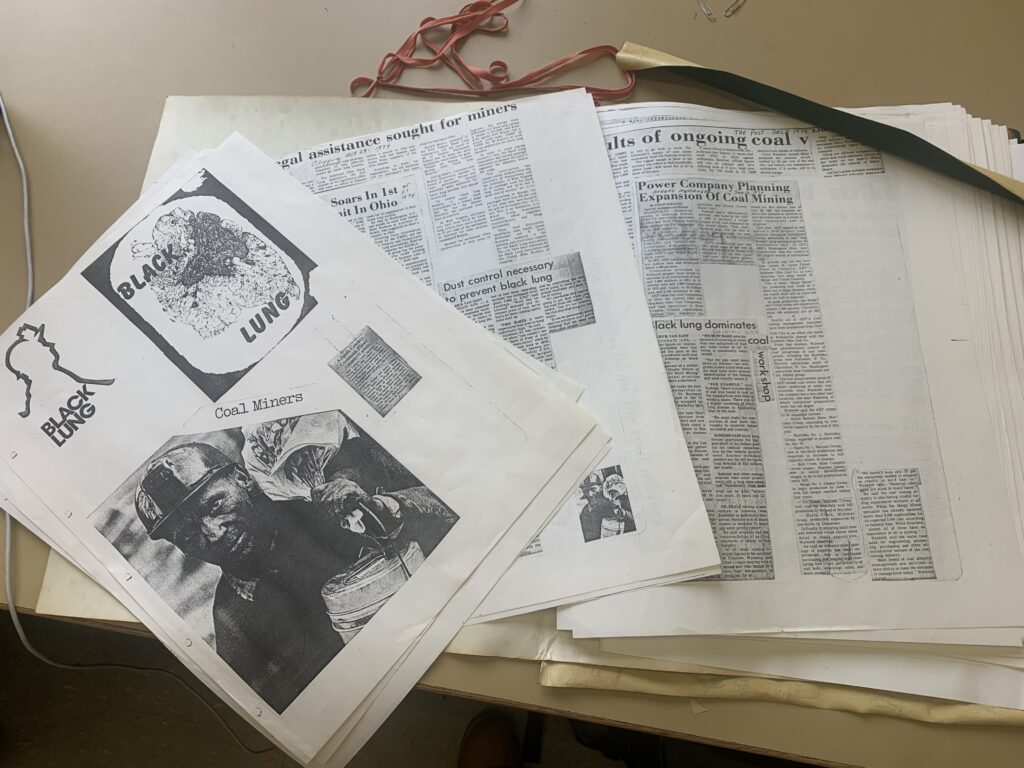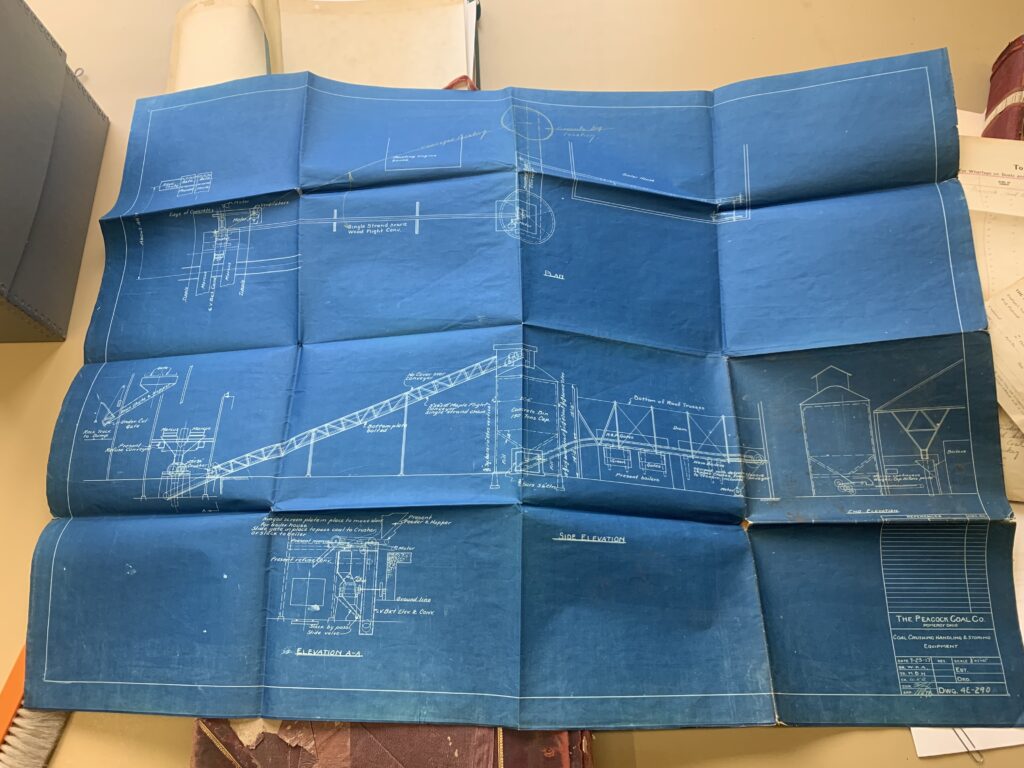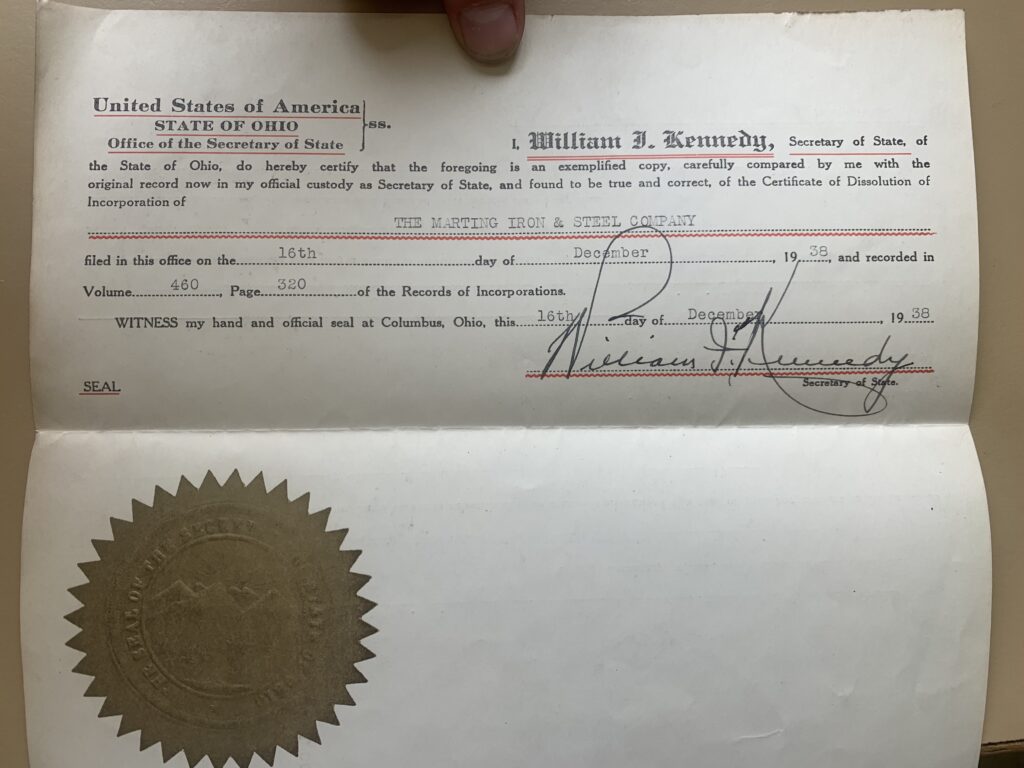Text and images by Samuel Coletta-Bates, Film ’25, Spring 2024 Manuscript Archives Assistant
This semester, my job as Archives Assistant within the Mahn Center has been to research and update finding aid descriptions for mining related collections. This has included delving into the collections themselves, as well as other supplemental resources to revise their content lists, and expand upon the historical notes. This process can also be thought of as a continuation of my previous work processing and categorizing the Columbus & Hocking Coal & Iron Company Collection (previously written about here), another Ohio-founded mining company.
The Mr. and Mrs. James Kidd scrapbook on the Southeastern Ohio Black Lung Association
Throughout this process of revisiting these collections, I’ve been greeted by a variety of fascinating items. The Black Lung Scrapbook, for example, is a giant scrapbook filled with news articles, fliers, and other various print-outs associated with the Southeastern Ohio Black Lung Association, the first of its kind in the state of Ohio. By reading through the various news articles, I was able to put together the exact date of the Associations conception, as well as the various founding members, the lead founder being the original co-creator of the scrapbook itself.

The Peacock Coal Company Ledgers
Many of the mining collections share similar qualities. For instance, many collections, such as the Peacock Coal Company collections pictured above are made up of several large leather-bound ledgers, usually containing payroll, credit, and shipping records. Occasionally there will be other materials left inside these ledgers. The Peacock Coal Company for example, had a large, beautifully designed blueprint of the coal crushing handling and storing equipment machinery and facilities. Similarly, in the Hecla Iron and Mining Company Real Estate Ledger, the ledger holds dozens of beautiful overhead maps of properties/land, and in particular, a startlingly gorgeous map of Columbus, Ohio from 1873.

The Etna Iron Works Records and Marting Iron and Steel Co. Connections
Occasionally I have found overlapping information between collections, which has been one of the most exciting parts of this study so far. For instance, the main furnace of the Etna Iron Works Co. was built in 1832, and continued to be their main powerhouse for the next twenty years, until it was bought out by a larger company. I would later find in my research that it was none other than the Marting Iron and Steel Co. who would purchase and run the Big Etna Furnace within their conglomerate. This company would go on to be successful for the next decade until it was eventually dissolved in 1920.
This leads to my favorite piece of historical text I’ve found so far: the original Certificate of Dissolution of The Marting Iron and Steel Company from 1938, which includes an original signature from William J. Kennedy, the sitting Secretary of State at the time, signing off on the dissolution.

Viewing all of the collections as synchronous pieces of a larger story, as opposed to an unrelated collection of texts, has been illuminating. Each of the collections informs the other, and together they all paint a fantastic picture of this era of Ohio history and culture.